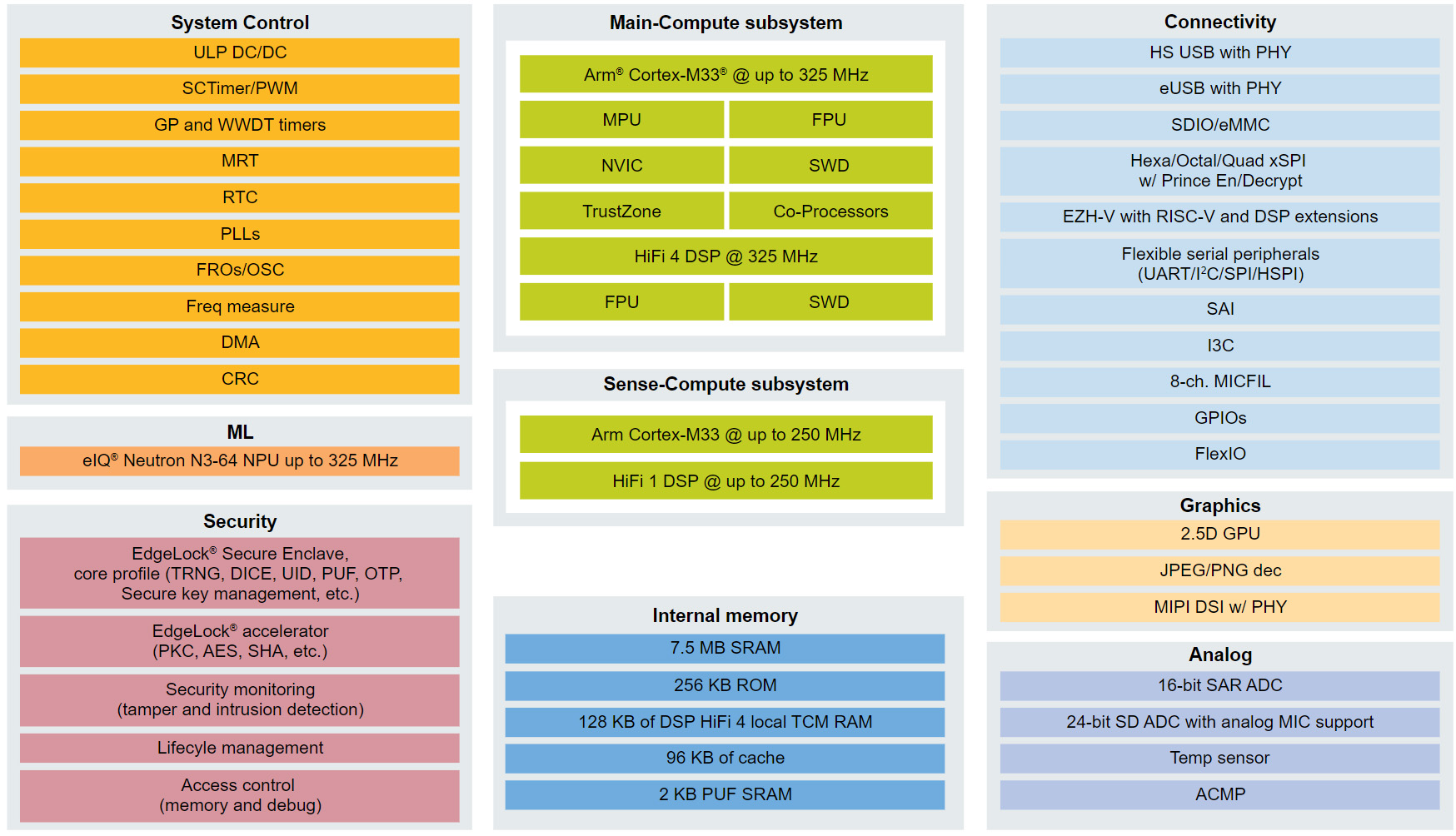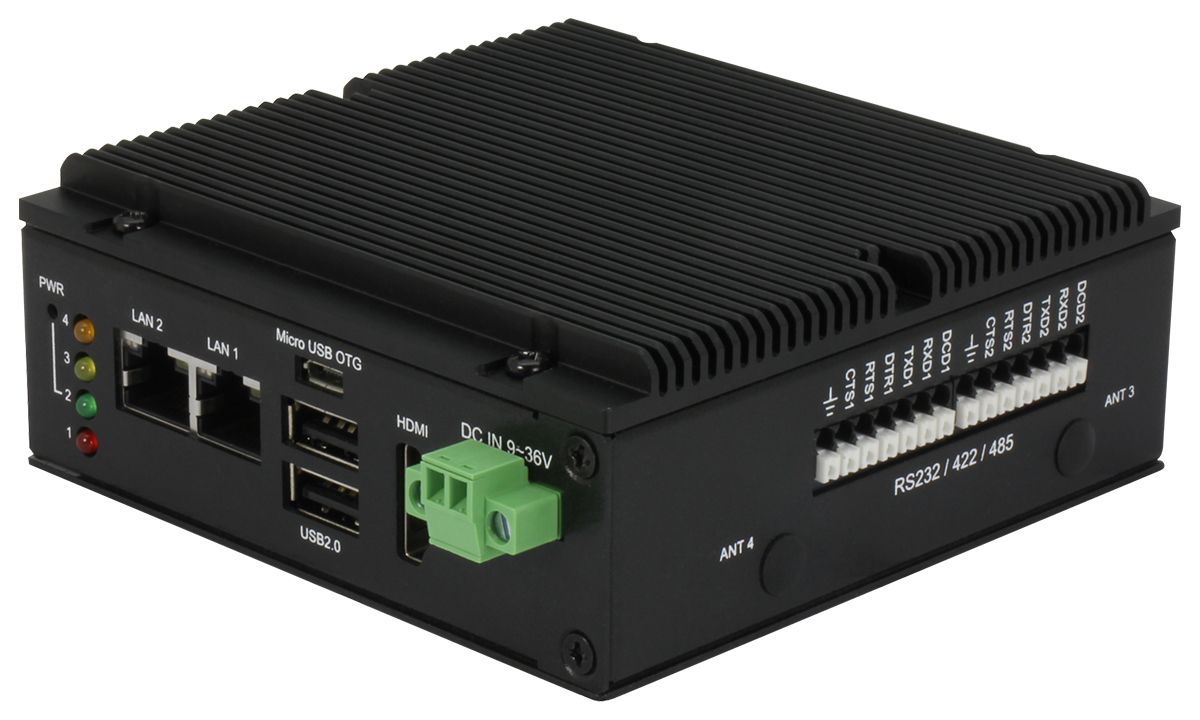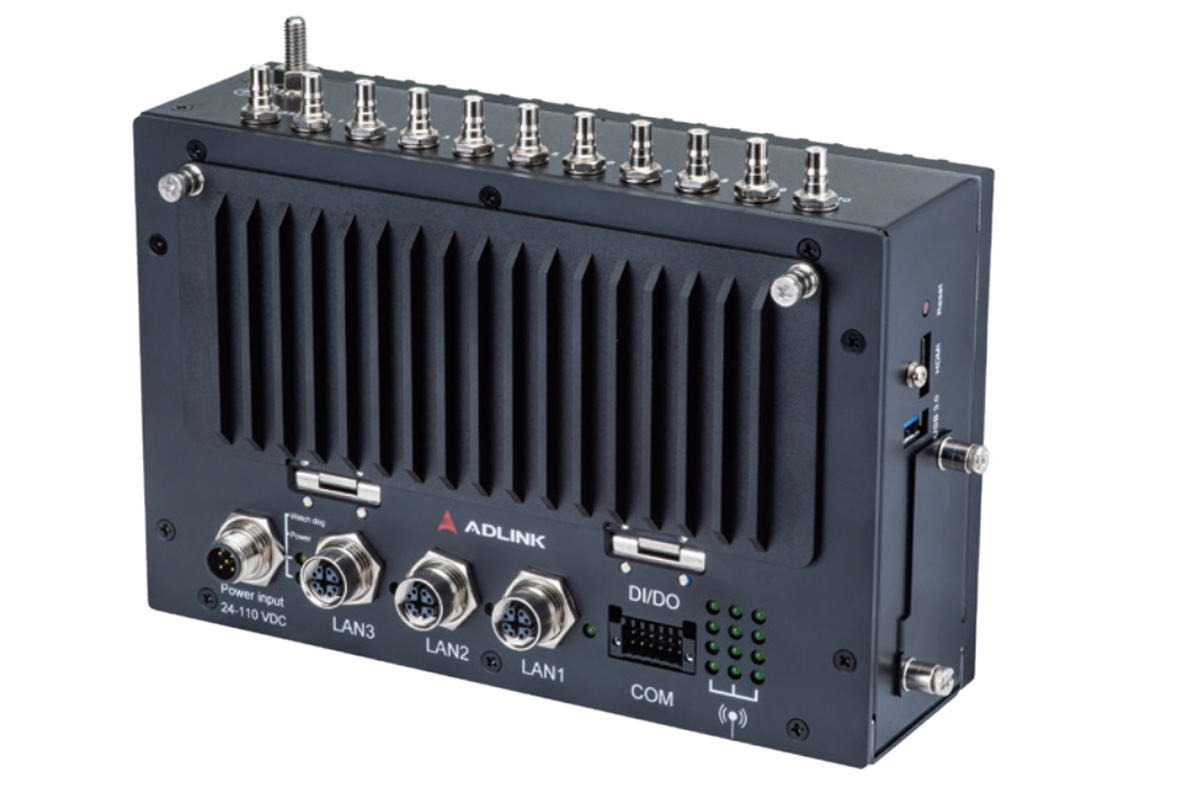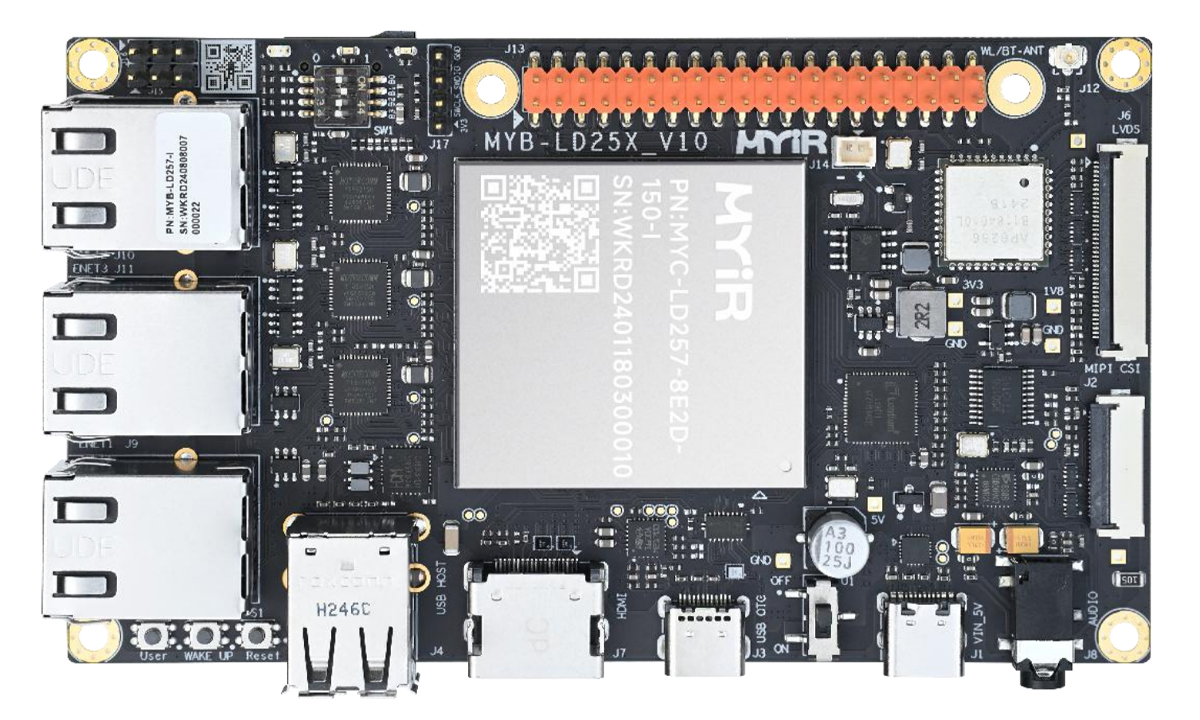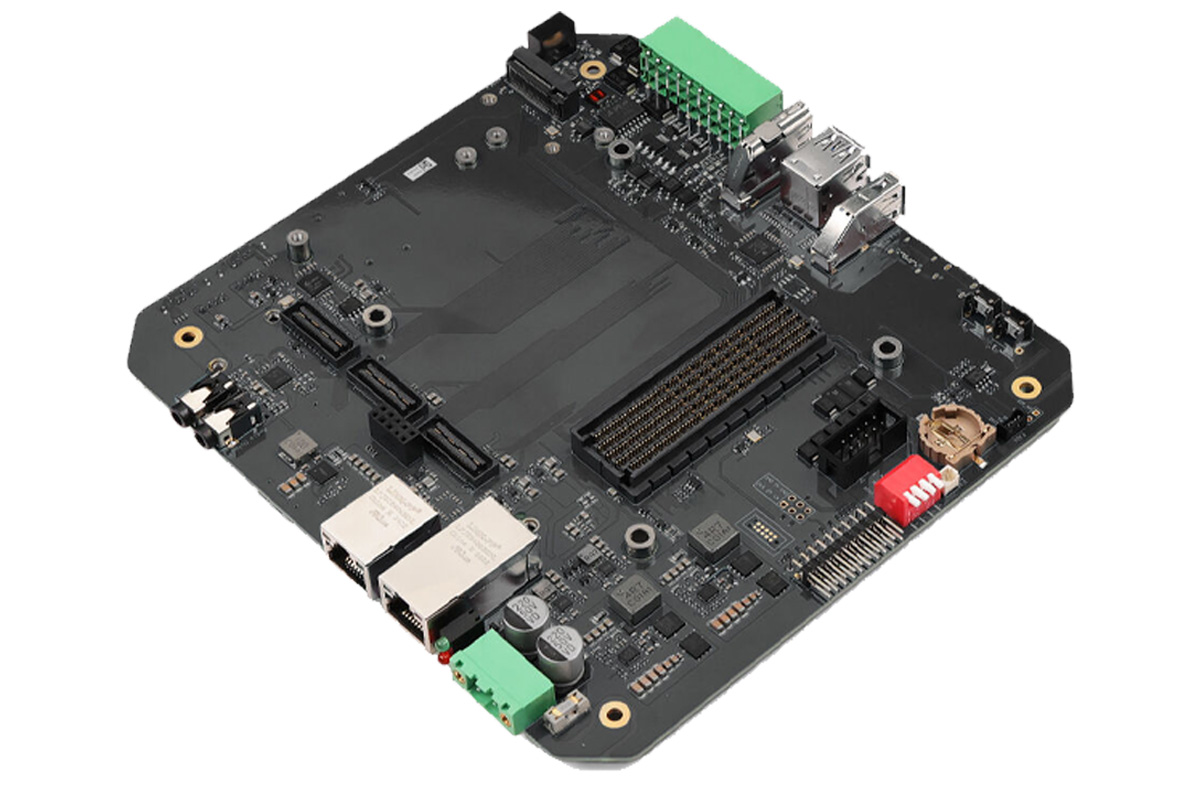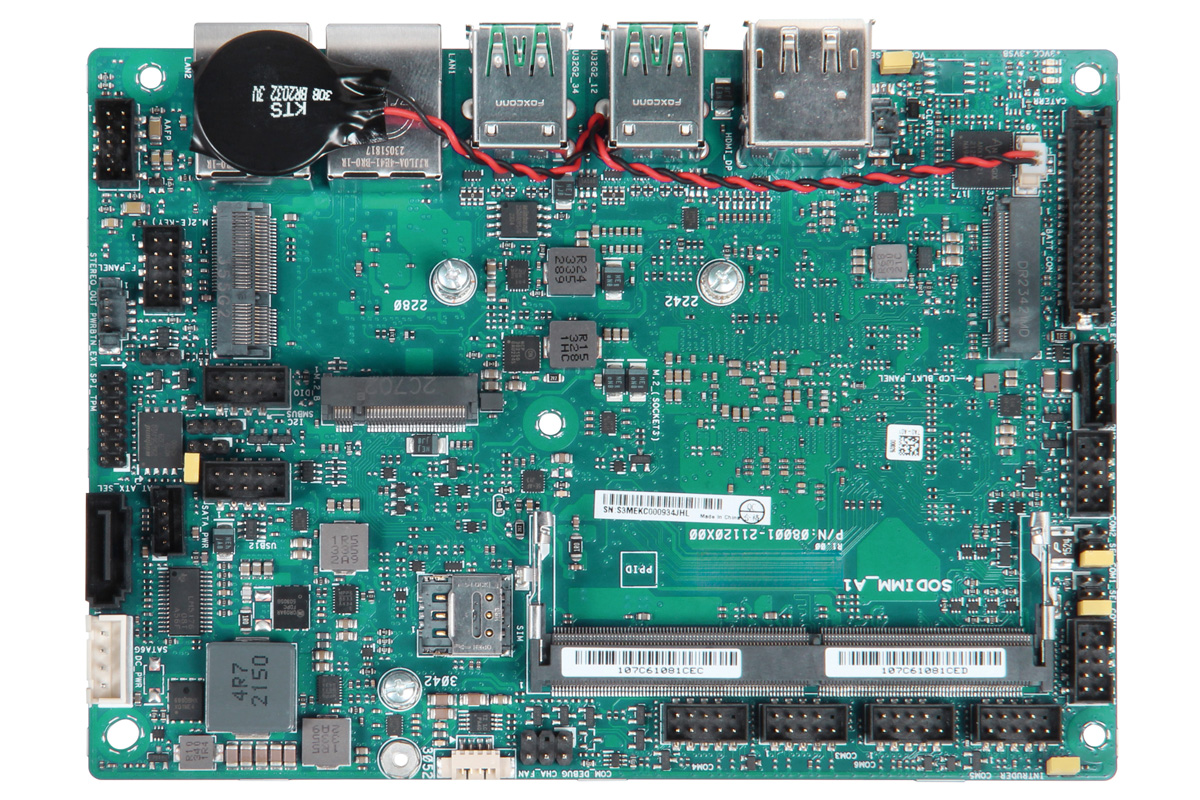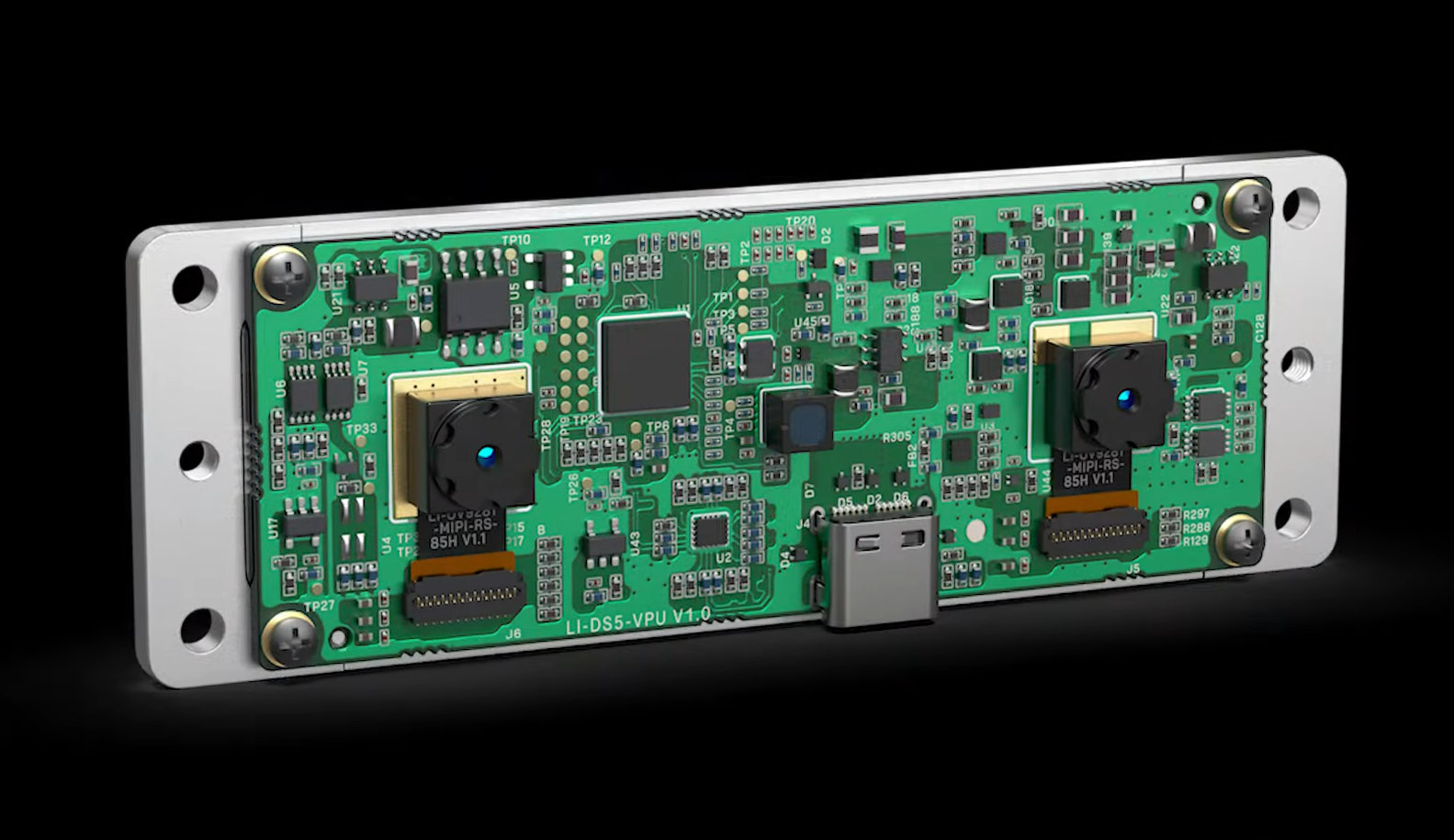NXP has recently announced the release of NXP i.MX RT700 RT700 AI crossover MCU following the NXP i.MX RT600 series release in 2018 and the i.MX RT500 series introduction in 2021. The new i.MX RT700 Crossover MCU features two Cortex-M33 cores, a main core clocked at 325 MHz with a Tensilica HiFi 4 DSP and a secondary 250 MHz core with a low-power Tensilica HiFi 1 DSP for always-on sensing tasks. Additionally, it integrates a powerful eIQ Neutron NPU with an upgraded 7.5 MB of SRAM and a 2D GPU with a JPEG/PNG decoder. These features make this device suitable for applications including AR glasses, hearables, smartwatches, wristbands, and more. NXP i.MX RT700 specifications: Compute subsystems Main Compute Subsystem Cortex-M33 @ up to 325 MHz with Arm TrustZone, built-in Memory Protection Unit (MPU), a floating-point unit (FPU), a HiFi 4 DSP and supported by NVIC for interrupt handling and SWD […]
AAEON SRG-CM4 IoT gateway features Raspberry Pi CM4 SoM for industrial applications
AAEON SRG-CM4 is an IoT gateway based on the Raspberry Pi Compute Module 4 (CM4) with 1GB to 8GB of RAM and 8GB to 32GB of eMMC storage, all powered by the Broadcom BCM2711 quad-core Cortex-A72 SoC. The gateway features a modular chassis, maintaining the compact size and industrial-grade features typical of AAEON’s edge gateway products, making it ideal for various embedded applications. In terms of connectivity, the SRG-CM4 offers two switchable serial ports supporting RS-232/422/485, with an optional isolated RS-485 port, CAN 2.0 A/B, and two isolated DI/DO. Additional interfaces include two Gigabit Ethernet RJ45 ports, two USB 2.0 ports, and an HDMI 1.4 video output. The device operates within a wide temperature range of -20°C to 70°C and supports a DC 9V to 36V power input, ensuring reliability in industrial environments. We previously covered the reComputer R1025-10, a Raspberry Pi CM4-based DIN Rail industrial gateway with optional wireless […]
ADLINK AVA-1000 is a rugged EN50155-compliant T2G gateway for railway and industrial applications
The ADLINK AVA-1000 T2G gateway is a rugged, EN50155-compliant T2G (Train-to-Ground) gateway designed for railway and industrial environments. Powered by a choice of NXP i.MX8M Plus Quad Cortex-A53 processor or an Intel Processor N50 Alder Lake-N processor. The i.MX8M Plus model is equipped with up to 8GB LPDDR4 and a 64GB eMMC flash whereas the Alder Lake variant features up to 4GB LPDDR5 memory and a 32GB eMMC flash. In terms of connectivity, the gateway features three M12 GbE ports and supports a wide range of options including 5G, WiFi 6, and GNSS. The AVA-1000 T2G gateway’s fanless design, wide operating temperature range, and 24-110V DC input ensure reliable operation in industrial environments. Additionally, its compliance with EN50155 and other industrial standards makes it ideal for various industrial applications. AVA-1000 T2G gateway specifications System Processor (multiple options) NXP i.MX8M Plus quad-core Cortex-A53 processor @ up to 1.8 GHz with Cortex-M7 […]
MYiR Tech MYC-LD25X – A compact STM32MP25 system-on-module running Debian 12
MYiR Tech’s MYC-LD25X is a compact 39x37mm system-on-module built around the STMicro STM32MP25 dual-core Cortex-A35 SoC running at 1.5GHz with a Cortex-M33 core, and an NPU capable of 1.35 TOPS. The module comes with up to 2GB LPDDR4 RAM, 8GB eMMC storage, and a range of connectivity options, including Gigabit Ethernet, USB, CAN FD, UART, and SPI. Designed for industrial HMI, edge computing, energy systems, and automation, the MYC-LD25X is suitable for high-performance applications in these fields. Previously, we covered other development boards from MYiR, including the MYD-J7A100T, MYD-YG2UL, MYD-YG2LX, and MYD-J1028X. We also wrote about other STM32MP25-based system-in-package and system-on-module namely the Digi ConnectCore MP25 and Octavo OSD32MP2. Feel free to check them out if you’re interested. MYC-LD25X STM32MP25-based System-On-Module MYC-LD25X specifications: SoC – STMicro STM32MP257D processor CPU – Dual-core Arm Cortex-A35 64-bit RISC core operating at up to 1.5 GHz MPU – 32-bit Arm Cortex-M33 RISC core clocked at […]
reServer Industrial J501 – An NVIDIA Jetson AGX Orin carrier board with 10GbE, 8K video output, GMSL camera support
Seeed Studio’s reServer Industrial J501, a Jetson AGX Orin carrier board designed for building Edge AI systems. With up to 275 TOPS of exceptional AI performance, this carrier board is designed for advanced robotics and edge AI applications for industrial environments. The carrier board features GbE and 10GbE LAN via RJ45 ports, three USB 3.1 ports, an HDMI 2.1 output, and multiple M.2 slots for expansion, including support for wireless connectivity via the M.2 Key B socket. Additionally, it has support for 8K video decoding and up to 8 GMSL cameras via an optional extension board. reServer Industrial J501 Jetson AGX Orin carrier board specification System-on-Module (one or the other) SoM – NVIDIA Jetson AGX Orin 64GB with CPU – 12-core Arm Cortex-A78AE v8.2 64-bit processor with 3MB L2 + 6MB L3 cache GPU / AI accelerators NVIDIA Ampere architecture with 2048 NVIDIA CUDA cores and 64 Tensor Cores @ […]
Portwell PEB-2274 3.5-inch fanless Intel Atom x6425E SBC offers triple display support, dual GbE, three M.2 sockets, and more
Portwell has recently launched PEB-2274, a 3.5-inch fanless SBC built around Intel Atom x6425E Elkhart Lake SoC. Key features include up to 32GB DDR4 memory, two Gigabit Ethernet ports, three M.2 sockets for storage and expansion, and a wide 9V to 36V DC power input. Additionally, it has various display interfaces (HDMI, DP, LVDS), multiple serial ports, USB, and audio options. We have already covered several other 3.5-inch inch Elkhart Lake SBCs with dual Ethernet ports including the Avalue ECM-EHL 3.5-inch SBC, Congatec Conga-PA7 Pico-ITX board, the iBase IB836 3.5-inch SBC, and the AAEON GENE-EHL5 SBC. All these boards support dual Ethernet and some of them have support for triple ethernet ports. But what’s unique about the PEB-2274 is that it has dual GbE ethernet, triple display, and a design specifically for industrial applications. Portwell PEB-2274 specifications: SoC – Intel Atom x6425E quad-core processor @ 2.00 GHz / 3.00 GHz […]
Intel RealSense Depth Module D421 offers a low-cost depth-sensing solution at just $80
Intel RealSense Depth Module D421 is an entry-level stereo depth module with a 0.2 to 3-meter recommended range, a global shutter to capture motion without artifacts, and a 75° × 50° field of view (FoV). Intel has made RealSense Depth cameras for years, including the popular RealSense D435i with 6 DoF tracking introduced in 2018 that currently sells for about $320. But not all projects need the most advanced features and/or are viable when needing to spend several hundred dollars on the camera itself. The RealSense Depth Module D421 is a much cheaper way to integrate depth-sensing into projects at a much lower price point. It’s fairly similar to the earlier D435 but lacks an RGB camera. Intel RealSense Depth Module D421 specifications: Based on the Intel D4 Vision Processor Image sensor technology – Global Shutter Recommended Range – 0.2 m to over 3 m (varies with lighting conditions) Depth […]
D-Robotics RDK X3 Development Board features Sunrise X3 quad-core Arm Cortex-A53 SoC with a 5TOPS “Bernoulli” BPU
The D-Robotics RDK X3 development board is designed for edge AI applications and features a Sunrise X3 quad-core Arm Cortex-A53 processor running at 1.5GHz with a dual-core BPU (Brain Processing Unit) with 5 TOPS of edge inference capability. The board includes a 40-pin GPIO interface, ensuring compatibility with Raspberry Pi 4B accessories for versatile project development. The RDK X3 offers 2GB or 4GB of LPDDR4 RAM and includes a MicroSD card slot for storage expansion. Designed for real-time applications like robot control and intelligent monitoring, its 5 TOPS inference capability makes it ideal for computer vision workloads such as object detection, body segmentation, scene parsing, etc… Previously, we covered the Horizon X3 AI development board, which uses the same Horizon Robotics Sunrise X3 processor. We’ve also written about several other edge AI development boards, including the Synaptics Astra Platform SL1680, SagireEdge AI 600, and MYiR Tech’s MYC-LR3568. Feel free to […]


